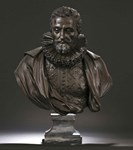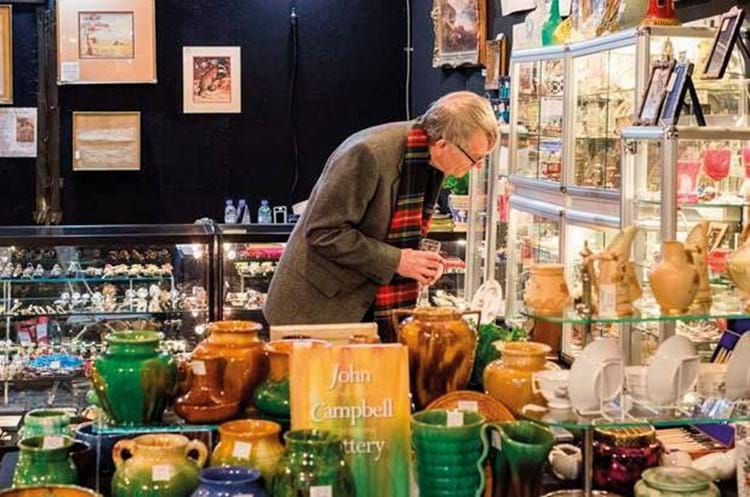
John Skeaping was commissioned by the factory to create a series of fashionable animal forms to attract foreign markets such as Australia in the 1920s.
They were produced in the ‘30s before facsimile reissue in the ‘50s.
The dealership brought two colourways to the event: a matte white and a black basalt version, both from the ‘30s. Each found a buyer, one local and another from the gallery’s home, Brisbane.
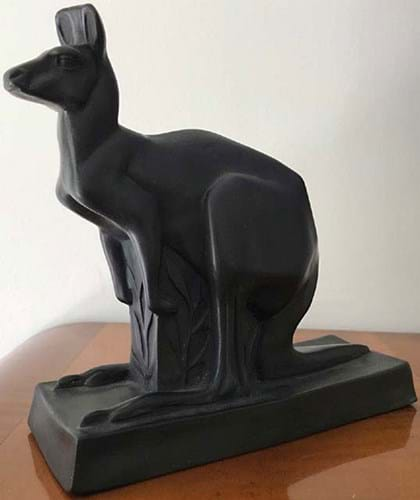
Leading event
The Sydney fair, which ran from August 23-25, brought together nearly 40 dealers from around Australia.
It is, by consensus, the leading event of its type in the country alongside its sister fair in Melbourne.
“It really is the destination in Australia for art and antiques annually and the quality of what is on offer at this fair is second to none,” The Antique Guild’s James Stanton told ATG.
While demonstrating some key differences between the antiques market Down Under and that in the UK, the fair was also a chance for dealers to offer a familiar assortment of objects – and concerns.
Events kicked off with a bustling private gala on the evening of August 22.
Early highlight sales included a Picasso etching, which print dealer Joseph Lebovic sold to a young couple for Aus$4000, and a late 19th century etagere in brass and walnut, which went from Elizabeth Syber’s stand, Antiquarian, where it was offered for Aus$3600.
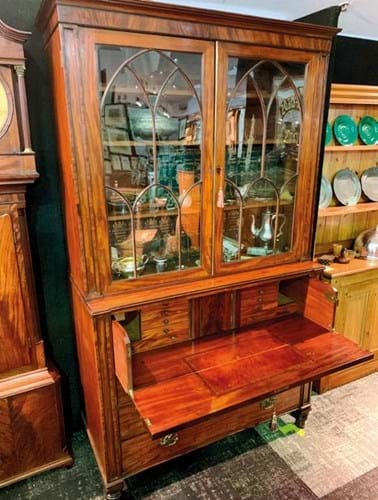
This was the second annual event in a new location, the White Bay Cruise Terminal. Although exhibitor numbers dropped last year – dealers can be cautious of change the world over – they had risen again for 2019.
As only part of the floor space is in use right now, there is scope to expand in future editions.
Offerings tended to reflect the taste of generations of dealers and collectors who have based their buying around trips to Europe (see an example below).
Many pieces of furniture, porcelain, ceramic and lighting could be traced back to England, though there was also a wide selection of Asian art and ceramic, assorted items of tribal pieces and works by Australian artists such as Ben Quilty and Brett Whiteley (1939-92).
The major contrast with the London market is at the high end. Generally, there are fewer ‘super-collectors’, those ultra-specialised buyers with detailed knowledge of their field and serious spending power who might turn up to shop at Masterpiece or Frieze Masters.
Sales over the Aus$100,000 mark are comparatively rare and, according to several dealers, few shoppers will venture above the low five-figure mark.
UK dealers will sympathise with many concerns of their Autralian counterparts, though. As well as the advent of an ivory ban (see News Digest, p10-11), traders fretted over the internet, a contracting collectors’ market and the ‘next generation’ of dealers.
Diverse selection
Many offered a diverse selection. Alan Landis Antiques, for example, made major sales in furniture such as an architect’s desk ticketed at Aus$13,000, while staging a special exhibition of Wedgewood 20th century designs, which he reported as being “a big success”.
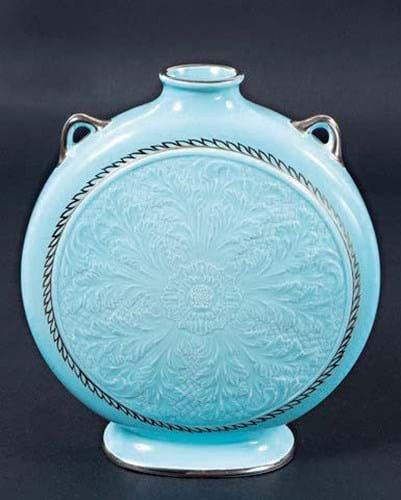
Elsewhere in the fair Etruria Antiques brought a selection of ceramics including part of a large single-owner Bow Porcelain collection and a Prattware portrait of Captain Cook (which sold).
Jill Roberts of Pentimento found lively interest in her assortment of piqué jewellery as well as miniatures, glassware and other small items.
The event also featured several talks during the weekend, a prize draw of Aus$500 to be spent at the fair as well as a treasure hunt with the same reward.
The Melbourne fair runs from April 30-May 3 next year.
£1 = Aus$1.81
aaada.org.au
Leading light lost
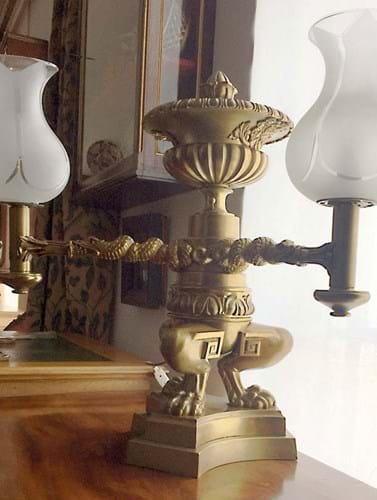
JB Hawkins Antiques of Tasmania sold a set of three George IV bronze and ormolu standing colza lights by Smethurst, c.1820, at the AAADA Art & Antiques Fair Sydney.
The lights were made for the library at Devonshire House in Piccadilly, London. However, the group was once a set of four, which the dealership’s John Hawkins brought to Australia in 1975. He had purchased them from Tom Hockenhull, one of a family of antiques dealers from Buxton in Derbyshire. There are believed to have been 12 originally.
In 1978, one was stolen from an advertising photo shoot for Marlborough Cigarettes at Greycliffe House in Sydney. Hawkins told ATG that the new owner “would love to get back the missing lamp” and appeals to readers with any information.
About Devonshire House, he adds: “I know a contemporary photograph of this interior exists but have never been able to locate a copy. Perhaps the erudite readership of the ATG could assist?”



